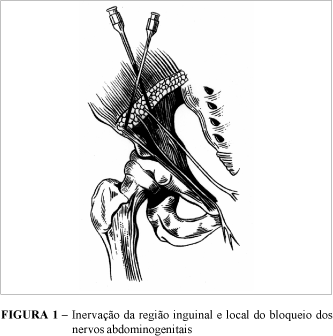AIM: To describe an anesthetic technique, as well as the results of surgical treatment of the inguinal hernia in children. PATIENTS/METHODS: Forty-eight patients were submitted to inguinal hernia repair under local anesthesia at "Santa Casa de Misericórdia de Cerqueira César", State of São Paulo, Brazil. There were 34 male and 14 female patients, range from 3 months to 12 years old. Local anesthesia was performed with a dose of 5 mg/kg body weight of 1% lidocaine through iliohypogastric and ilioinguinal nerve blocks, medially to the anterior superior iliac spine, and at level of the pubic tubercle. Sedation was done with an association of ketamine (1 to 2 mg/kg) and diazepam (0,2 to 0,4 mg/kg). RESULTS: In all patients except one the procedure was done without complications. In that patient the local anesthesia was not effective and was followed by inhalatory anesthesia. Surgical complications (blood collections) were observed in three patients: two at the scrotum and one at subcutaneous, with good evolution. CONCLUSIONS: We conclude that the use of local anesthesia associated to sedative is a simple and safe procedure for the inguinal hernia repair in children.
Hernia; Hernia; Anesthesia; Anesthesia; Lidocaine; Diazepam; Child


